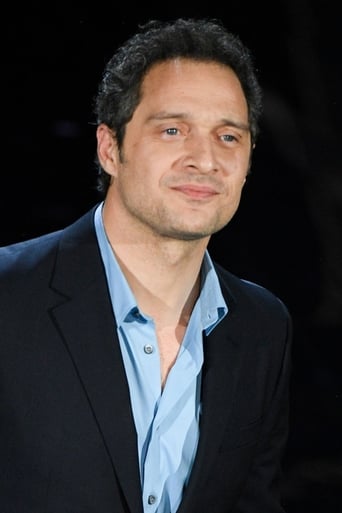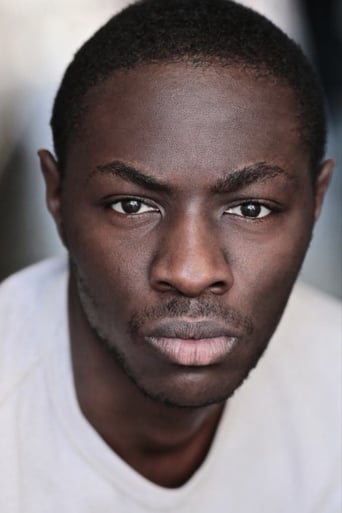Roman Sampson
One of the most extraordinary films you will see this year. Take that as you want.
Allison Davies
The film never slows down or bores, plunging from one harrowing sequence to the next.
Elain-ee
I just can't believe that even now, there are people like one reviewer on this page who are so nakedly towing the fascist party line on Genoa. The Diaz raid WAS as bad as this film makes out... at least, according to the severely injured and traumatized protesters, it was. And, call me crazy, but their take on the events matters a lot more to me than what some disconnected overseas film critic who wasn't even there has to say. Especially a critic who is more or less quoting the same anti-communist lines that the police in this film dispensed as they were beating people up...! That aside, I want to say that this film, while overlong and brutal, is extremely hard to stop watching because it is so heartfelt. I was 24 when these events happened and I was attending the equivalent actions in London. Being that we were all so connected to the global anti-globalization movement (if that's not a contradiction in terms?) my friends and I were among the first people outside of Genoa to hear about the events at Diaz. Back then, I assumed from the descriptions given by Indymedia that it was pretty awful (they described the blood on the floor and walls, as well as the fact that women and elderly people were beaten in their sleep). Even so, I still didn't grasp the full extent of the damage until I saw this re-enactment. What would have been a good addition to this film, though, would have been to show some of the aftermath, in which various countries pursued justice for their respective citizens and were rebuffed by the Italian authorities with what can only be described as fascist zeal. This left the rest of Europe shaken, I believe, in the same way that the abuse meted out by the police left the left activist scene shaken. It was also a telling moment in the anti-capitalist movement, because it demonstrated how little the values of the masses actually mattered to the elite.One interesting commentary that kind of sums the whole event up was made by Nick Davies of the Guardian, eight years after the fact. He wrote that, at Genoa, "the police acted as though somebody had promised them impunity". Since none of the assailants ever served time for their crimes, we can safely assume that that promise was upheld... and continues to do so. But by whom? I guess the answer lies is in the name of the entity whose summit the Genoa Social Forum was protesting against.
hkarlovac
People need to understand that this is a *drama* not a documentary. Drama as in the dramatization. It was a terrible event in actuality, but this goes way overboard in depicting brutalization just for the shockfactor, of which there is plenty. It goes completely overboard. Actually, the filmmakers should be ashamed of themselves for exploiting what happened just to make a buck. It is very unfortunate that some ignorant people will assume that just because it is in a movie it is true. It is not. This film is a classic communist style "agitprop" film: agitation propaganda, made for the purpose of provoking the audience to action. Action in ignorance is as bad as no action. While people have a right to be outraged on the basis of an actual documentary or reading actual news accounts, this piece of fiction is not it.
JvH48
The film "Diaz – Don't clear up the blood" had its world premiere in Berlin, as part of the Berlinale 2012 film festival, in front of a full house with an estimated 1,750 viewers. The screening ended with an overwhelming applause, that lasted for an unusual long time. A considerable part of those involved in making this film was present. In his introduction the director mentioned that several victims of the raid were among them. He admired their preparedness to relive the dire event.The film title has two parts. The first (Diaz) part refers to the name of the school where the raid took place. The police thinks it is a nest full of "black bloc", allegedly being the core of demonstrations around the G8 summit in 2001 in Genoa (Italy). The second (Don't clean...) part refers to a hand made sign that was written on the wall after the raid, actually asking to keep intact what was left behind. That included large blood stains all over floors and walls, very useful as indisputable contradictory statement against the police PR.A clever scenario circles around what happened, rather than treating events chronologically. An important feature of the film is that we were introduced to miscellaneous persons having specific roles later on. This served as a binding element, elevating the film above a simple documentary. As the director said: due to these minor roles, you better remember the events afterwards. We see for example an elderly tourist, who got detached from his bus tour and was only looking for a place to sleep. Another example is a journalist from a right-wing magazine, taking leave to report from the inside out. Many more such personal stories develop along the line, working out exactly as the director mentioned.We were also offered an impression how average policemen stand in this. The tone is set in a scene where we see how a police car gets lost in some neighborhood they better stay out. They are immediately surrounded by angry citizens calling them "murderers", the result of a recent event where one person was killed in the course of a demonstration. The policemen feel threatened but escape unharmed.Also from a law enforcement viewpoint, but on a different level, we observe several decision makers (district attorney, police commanders, city council, etc). They had to depend on biased reports from police officers, finally deciding to proceed on very weak grounds, but "we must do something". Various evidence was planted to support their decision, or declared solid evidence later on. Benign empty bottles were allegedly stocked there for making Molotov cocktails. The PR aftermath from the police was evidently biased too, Best example were remarks about prepared wounds, said to have already existed before the raid, with express intent to blame the police later on. Of course, speaking of obvious bias is easy for us to say; we had ample chance to see the general picture from both sides.The actual raid is visualized in full force, about halfway the two hours running time. What we see before and after this core scene, continuously circles around it by showing whereabouts of victims and bystanders, and how they got involved. All are clearly innocent of the bad things the police attributed to them. They all happened to be at the wrong place at the wrong time. These personal stories, however small and trivial in the context of what is happening, work very well to elevate this film above a dry documentary that only states facts.I could not help wondering how useful it is to show the raid in every nasty detail. One important reason is that pictures speak one thousand words. We can expect the impact on the average viewer to be much greater than only words. A second reason could be that the film clearly shows the needlessly exaggerated amount of police power put into force, just for a relatively small unarmed group. A perfect illustration was the scene were everyone was standing with hands above their heads, apparently believing that an explicit show of being unarmed and defenseless would suffice, but the police bulldozed over them regardless.We witnessed a meeting of city council and law enforcement decision makers, giving a clear insight how it could come that far. The proof that lefties (not my words) were gathering was very thin (long hair, hoodies, what further proof do we need?). Also noteworthy was a statement from the police commander that he would be unable to control his men once in action. After that we saw a rather sketchy briefing for the policemen in the field, merely amplifying already dormant feelings that Diaz housed very illegal, near-terrorist actions. After such a biased preparation the heavily visualized police brutality within Diaz becomes a bit more understandable. The instructions to the policemen conveyed an image of illegality, with adversaries determined to plan demonstrations and other unlawful actions.Part of the final credits were some statistics about policemen and other officials convicted for involvement in the action. That is how "the system" works, but I'm certain it took years to come to final convictions. And above all, it leaves us with doubts whether it will improve future decision making. And last but not least, it won't repair the (internal and external) wounds of the victims having to live on with the consequences.All in all, an impressive document about the raid, providing very useful insights in what happened before and after. The various personal stories bring it to a much higher level than just a documentary. Also very interesting is that we see both sides, and the mechanisms involved how things like this get out of control.
catacomb-kitten
Seriously. I walked out of it somewhat disorientated and still shaken. I saw 'Diaz - Don't clean up this Blood' about a month ago at its Berlinale Screening and it still haunts me. I could tell that most of the audience shared my feelings and some even left the cinema, because they couldn't bear what they were seeing. Nevertheless the applause was extraordinary. We have all seen our fair share of violence and cruelty in the movies. But this is a completely different pair of shoes. The non-fictional background of the film plot concerns me personally, both as a human being and as an European citizen. It's hard to imagine this happened ten years ago in a Western European country and yet it DID happen and it could - and probably will - happen again. That's why it is so important to deal with the topic of police violence instead of ignoring it or playing it down. The film crew and cast did a great job capturing the horror of this disastrous event. And that's what 'Diaz' mainly seems to be about: re-creating and contextualizing the occurred violations of human rights in 2001 in Italy as authentic and accurate as it can be done in a feature film. It obviously wants you to be shocked, but with good reasons: it describes shocking incidents, which should not be trivialized. If you do some research, you'll find out that the film indeed does not exaggerate anything. But it does NOT inform you about the political background, you have to inform yourself. And I think you will, after you've seen it.'Diaz' is not entirely flawless, but it could be a film of great significance, provided that it motivates the audience to read up on the subject.If you're interested in a less gripping, but much more informative approach on the matter, check out the documentary "The Summit" (2012).




